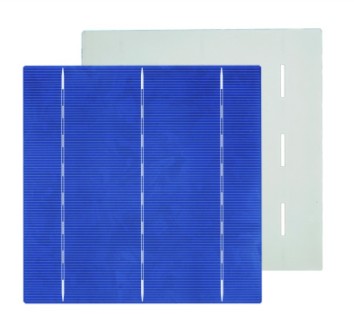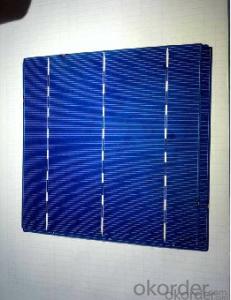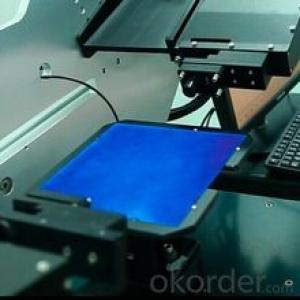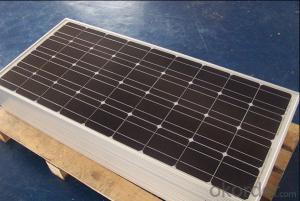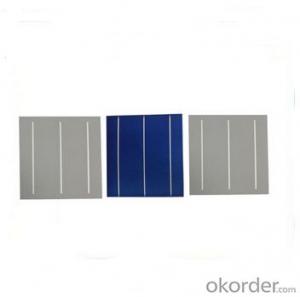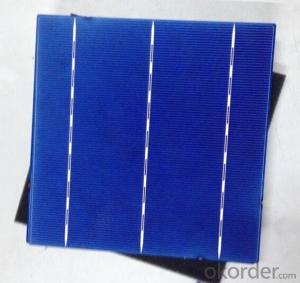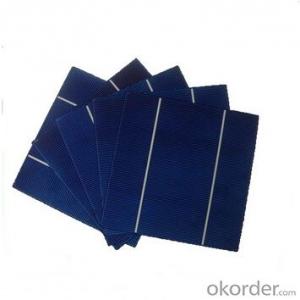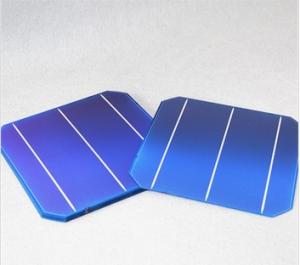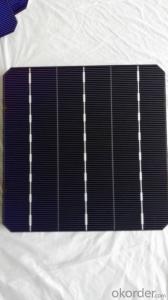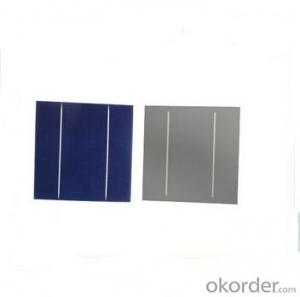Solar Cells in Glass - Poly-Crystalline Solar Cell 156mm with Excellent Conversion Efficiency and Weak Light Performance
- Loading Port:
- Tianjin
- Payment Terms:
- TT or LC
- Min Order Qty:
- 10 watt
- Supply Capability:
- 500 watt/month
OKorder Service Pledge
OKorder Financial Service
You Might Also Like
Guaranteed by refinement solar cell producing process, up to 18.1% efficiency for mass production of CSG-MM156 series cells, up to 18.5% for the highest efficiency, up to 265W (6×10 Series) for module output max power;
Better shortwave response ensured by Selective Emitter Technology;
Better continuousness of fingers and stable performance ensured by Double Printing Technology;
Whole-process inspection from wafer input to cell packaging, to ensure high quality and excellent performance;
Production and Quality Control
CSG fully integrated PV chain from silicon materials, ingot, wafer, solar cell to solar module, and well-established QC management system, to guarantee consistency of high quality;
Mature technical control and strict sorting standard, to ensure consistency and reliability of solar cell;
Completely careful operation during production to avoid micro-cracks and reduce breakage rates during module assembly;
Electrical Properties
Mature crystalline cells manufacturing technology and complete quality control system, to ensure excellent electrical stability;
Lower module encapsulation loss realized by reasonable electrical characteristics setting, including high voltage and low current, high parallel resistance and low series resistance, classification with precise current classes, and positive power tolerance;
Excellent conversion efficiency, weak light performance and shortwave response guaranteed by leading R&D innovation system;
Recommend Welding Technique
Welding:tin-coated copper ribbons, coated with 20-25μm thickness (64%Sn,36%Pb)
Applications of Solar Cell Products
1.Fields of Aerospace, Space development and Space-tech.
Solar cells products first to show their talents in space technology because of its reliability and unique superiority. 1958 Solar first landed on satellites. Thus aerospace, satellites have not been away from the solar cell; the development of future space, the first month of the solar cell kicking will play an important role. It landed on other planets, the current Mars rover "Spirit", "Opportunity" solar cells on which they work is the main power supply.
2. Application of industrial and agricultural production.
Solar cell products have also been widely used in the industrial and agricultural as a new energy. In scattershot interpersonal mountain sea, a variety of lighthouse beacon, a variety of satellite communication station; a variety of remote sensing, meteorological station, road and rail automatic lights have become the preferred power source.
In many remote areas without electricity-grid, photovoltaic power supply system is widely used too.
Photocell gets a lot of applications in automatic control, such as the measurements of seized and number for the plant products; production of various types of sensors; photocell various wavelengths (colors) in response to different sensitivity (or stamped filter) of the probe light color.
Solar cell products are also the professional solar power of Transportation, communications, forestry, agriculture, television, meteorology, geology and other.
3. Small civilian life products
Solar cell products have lots of small product range, under various names currently.
(1) Small-scale photovoltaic system class:
Solar charger: cases can give two AA nickel-cadmium battery, or do a small 3V power supply.
Solar Calculator: portable pocket calculator to do the power supply, there is light can work.
Solar hood: use a small fan to automatically adjust the sun, summer is cool to take the absolute best.
Solar portable lights: solar battery charging, energy storage batteries, particularly suitable for areas without electricity and mobile use.
(2) Many variety of electrical equipment and backup power.
- Q: Can solar cells be used for powering electric water heaters?
- Yes, solar cells can be used to power electric water heaters. By harnessing sunlight and converting it into electricity, solar cells can provide a sustainable and renewable energy source to heat water in electric heaters. This helps reduce reliance on traditional power grids and contributes to a greener and more eco-friendly way of heating water.
- Q: How do solar cells perform in low-light conditions?
- Solar cells perform less efficiently in low-light conditions compared to bright sunlight. The amount of electricity generated by solar cells is directly proportional to the intensity of light they receive. Therefore, in low-light conditions, such as during cloudy days or in shaded areas, solar cells produce less electricity. However, advancements in technology have improved the performance of solar cells in low-light conditions, enabling them to still generate some power even under these circumstances.
- Q: Can solar cells be used for disaster relief efforts?
- Yes, solar cells can be used for disaster relief efforts. They provide a reliable and sustainable source of electricity, enabling the operation of essential equipment such as medical devices, communication systems, and water purification systems in areas affected by natural disasters. Solar cells can also be easily transported and quickly deployed in emergency situations, making them an ideal solution for providing power in remote or inaccessible locations.
- Q: Can solar cells be used for powering data centers?
- Yes, solar cells can be used to power data centers. Solar energy can be harnessed through photovoltaic panels to generate electricity which can then be used to power the infrastructure of data centers. This renewable energy source can help reduce the carbon footprint and dependency on fossil fuels, making data centers more sustainable and environmentally friendly.
- Q: What is the impact of saltwater exposure on solar cell efficiency?
- Saltwater exposure can have a significant negative impact on solar cell efficiency. The saltwater can corrode the metal components of the solar cells, leading to a decrease in their performance and overall efficiency. Additionally, the saltwater can create a conductive pathway that can bypass the solar cells, resulting in a loss of electrical energy. Therefore, it is crucial to protect solar cells from saltwater exposure to maintain their efficiency and prolong their lifespan.
- Q: How do solar cells handle electromagnetic radiation?
- Solar cells handle electromagnetic radiation by converting it into electrical energy. When sunlight (which is a form of electromagnetic radiation) strikes the solar cell, it excites electrons, allowing them to flow through the material, creating an electric current. The materials used in solar cells are designed to efficiently absorb and convert a wide range of electromagnetic radiation, including visible light and some parts of the infrared and ultraviolet spectrum.
- Q: Can solar cells be used in mining operations?
- Yes, solar cells can be used in mining operations. They can provide a reliable and sustainable source of electricity for various mining activities, such as powering equipment, lighting, and ventilation systems. Solar energy can significantly reduce the dependence on fossil fuels in mining operations, leading to lower operational costs and reduced environmental impact.
- Q: How are solar cells made?
- Solar cells are typically made by using a combination of silicon, metal conductors, and anti-reflective coatings. The process involves depositing layers of these materials onto a substrate, which is then cut into individual cells. These cells are then assembled into solar panels, which can convert sunlight into electricity.
- Q: Can somebody list some of the materials used for making solar cells?
- The basic component of a solar cell is pure silicon, which is not pure in its natural state.
- Q: What is the impact of snowmelt on solar cell efficiency?
- The impact of snowmelt on solar cell efficiency is generally positive. When snow covers solar panels, it reduces their ability to generate electricity due to the lack of sunlight reaching the cells. However, as the snow melts and slides off the panels, it allows for maximum exposure to sunlight, thus improving the efficiency and energy production of the solar cells.
Send your message to us
Solar Cells in Glass - Poly-Crystalline Solar Cell 156mm with Excellent Conversion Efficiency and Weak Light Performance
- Loading Port:
- Tianjin
- Payment Terms:
- TT or LC
- Min Order Qty:
- 10 watt
- Supply Capability:
- 500 watt/month
OKorder Service Pledge
OKorder Financial Service
Similar products
Hot products
Hot Searches
Related keywords

